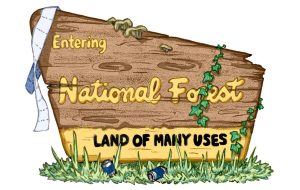Student groups, working group to look at “Missionary” Mascot
December 8, 2015
President Kathy Murray, the Associated Students of Whitman College (ASWC) and the Indigenous People’s Education and Culture Club (IPECC) are creating initiatives to look into potentially changing the Whitman College Mascot, the “Fighting Missionary.”
The missionary mascot was created in 1907, while the specific image of “Marc the Missionary” was associated with the school starting in 1951 . Though the image of Marc in not used anymore for admission or athletic materials, replaced instead by the more secular clock tower, the mascot still is an important part of Whitman’s history.
However, many members of the Whitman community oppose the mascot because of its violent and racist roots.
“The mascot is inherently a racial project that embodies the colonial legacy of Narcissa and Marcus Whitman on campus. It is is an icon of the systemic racism on campus that is rooted in the college’s history,” Cassandra Otero (’17), leader of IPECC’s efforts to alter the mascot and IPECC President Brenna Twobears (’17) said in an email interview with The Pioneer.
IPECC has been a leading group in efforts to change the mascot and have solicited student suggestions on alternative names for the mascot. During a Nov. 14 “IPECC is for Everyone” party that included a drum group, jewelry making and an activity trying to name the homelands of Native American tribes from the Northwest, participating students voted on mascot illustrations submitted over the course of a week. The most popular ideas from the event were the “Fighting Squirrels” and the “Whitman Wallabies.”
But IPECC is not the only group looking into alterations. ASWC student senators first-years Caroline Bauwens, Ben Cosgrove and sophomore Emma Bishop are currently advocating for changing the mascot, and sent out a survey to the student body to see where it stands on the issue.
“[ASWC] is supposed to represent the views of the student body, not just ourselves, and so we wanted to make sure that we have a majority of the student body who wants to change the mascot, or we also offered the option to not have a mascot just to see if that would be of interest to students instead, but it wasn’t. People definitely want a mascot that isn’t a missionary, though not as extremely as expected. It was about 70 percent of students want to change the mascot from the missionary,” Bishop said.
Bauwens personally wants the mascot to be changed, and has used her position as an ASWC senator to explore potentially changing the mascot.
“While I know that the missionaries in this area were killed, missionaries are known for coming to this land to convert Native Americans, forcing their ideals on their culture, and they ended up killing huge numbers of them because of their modern weapons and [the] diseases [that] they brought with them,” Bauwens said in an email interview with The Pioneer. “I do not want to be called a ‘Fighting Missionary,’ and I know a lot of other Whitman students feel the same way. We commemorate our history in other ways and I don’t think the mascot should be one of them. It should embody the spirit of the students who attend Whitman.”
As groups look to change the mascot, President Murray announced plans at the Dec. 6 ASWC meeting to create a working group to assess the appropriateness of the Fighting Missionary mascot for the school. The group will include three students representing ASWC, student athletes and IPECC, as well as faculty, staff and alumni participants.
The group will solicit feedback from all of these groups and present their finding to President Murray in a few months. The purpose of the committee is to decide if the Whitman community overall believes that the mascot should be changed. From there, President Murray herself will decide if the mascot should be changed and how to go about deciding the new mascot.
“Just looking at the amount of participation in the survey we sent out the data…it’s clear that the majority of Whitman (at least from what we can tell from the survey) wants a change. There have been a few responses expressing concern about changing the mascot, and a handful were completely opposed, but the huge amount of positive feedback has only encouraged me to pursue this and try to get a change as strongly as I can,” Bauwens said.






Casey • Mar 28, 2016 at 4:11 pm
dang..got worked up. Should be South East Washingtonians 🙂
Casey • Mar 28, 2016 at 4:10 pm
Dear Current Students,
Missionary work was not racist. Here’s a definition of missionary.
Missionary: a person sent by a church into an area to carry on evangelism or other activities, as educational or hospital work.
Education and hospital work. Do you understand Marcus was a doctor. He had no clue his group of people would spread disease and kill the native populations.
Colonial legacy of Marcus and Narcissa? Are you kidding me? Why keep the name of the school Whitman College if they were such horrible people? Please for the love of God let’s name it the Liberal Arts College in South East Washington. We can change our mascot to the South West Washingtonians, oh wait he had slaves. DANG! Let’s rename Washington while we are at it.
Please stop this silly crusade. Oh dear I used another religious word…
Somewhat proud alumni ’97.
-Casey
David • Dec 10, 2015 at 1:05 pm
You DO know who Marcus Whitman was Don’t You?